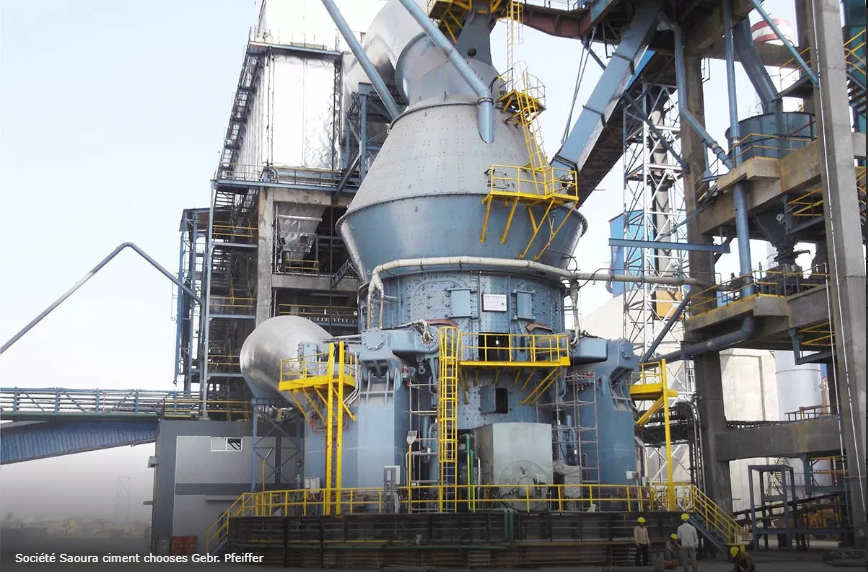In modern cement production and industrial grinding, the Vertical roller mill has become an essential piece of equipment known for its superior efficiency, compact design, and ability to handle diverse materials. Its growing adoption across cement plants and mineral industries has completely changed how materials are ground and processed. For professionals aiming to maximize performance and energy savings, understanding the core operating principles and efficiency factors of a Vertical roller mill is crucial.
Understanding How a Vertical Roller Mill Works
At its core, a Vertical roller mill operates through the compression and shearing forces applied by rollers onto a rotating grinding table. Raw materials, such as limestone, slag, or clinker, are fed from the top and pass between the rollers and the table, where they are crushed and ground into fine powder. Unlike traditional ball mills that rely on impact, the Vertical roller mill utilizes a more controlled grinding process, reducing wear and optimizing energy use.
One of the standout advantages is its integrated system design. The same unit performs grinding, drying, and separation simultaneously, minimizing equipment footprint and maintenance costs. The internal airflow system efficiently carries fine particles through the separator, while coarse materials are returned for regrinding, ensuring consistent product quality and stable operation.
Key Principles for Efficient Vertical Roller Mill Operation
1. Proper Feed Rate and Material Uniformity
Consistent feeding is the foundation of smooth mill operation. Irregular feed size or fluctuating feed rates can cause vibrations, uneven grinding, and energy waste. Operators must ensure that materials entering the mill are of uniform size and moisture content. This balance helps maintain steady grinding pressure and prevents roller slippage or blockages.
2. Optimal Grinding Pressure
Grinding pressure directly affects product fineness and energy consumption. Too much pressure can lead to excessive wear on rollers and the table, while too little pressure may cause poor grinding performance. Finding the optimal balance requires monitoring mill load, material hardness, and desired output fineness. Regular adjustments based on material behavior keep the system running efficiently.
3. Airflow and Separator Efficiency
Airflow plays a vital role in material transport and classification. A well-calibrated airflow system helps maintain internal temperature, removes moisture, and separates fine particles from coarse ones. The separator’s performance directly influences product quality and energy efficiency. Operators should frequently check separator blades and air volume settings to ensure precise classification and prevent overgrinding.
4. Temperature and Moisture Control
Maintaining ideal temperature and moisture levels inside the Vertical roller mill is essential for stability. If the feed materials contain excess moisture, drying efficiency drops and buildup may occur. Conversely, overly dry materials can reduce grinding efficiency. A stable gas flow and proper heat balance ensure that the grinding process remains smooth, with minimal downtime or fluctuation in output.
Enhancing Efficiency and Longevity with Cementl
When discussing advanced grinding solutions, the role of trusted brands like Cementl cannot be overlooked. Cementl has built a strong reputation for producing high-quality, durable Vertical roller mills designed to maximize plant performance and reduce operational costs. Their designs integrate advanced hydraulic systems, intelligent controls, and superior wear-resistant materials that extend component life and ensure consistent product quality.
Cementl’s approach focuses on precision engineering and sustainability, making their Vertical roller mill models ideal for modern cement plants aiming to lower carbon emissions and energy usage. With an emphasis on long-term reliability and technical support, Cementl helps operators achieve both environmental compliance and profitability. Their innovative designs also simplify maintenance, reducing downtime and improving overall plant availability.
Best Practices for Sustainable Vertical Roller Mill Operation
To maintain efficiency over time, regular inspection and preventive maintenance are key. Checking roller and table wear, ensuring proper lubrication, and keeping hydraulic systems clean all contribute to long-term stability. Additionally, monitoring vibration levels and fine-tuning control parameters help operators detect issues before they escalate into costly breakdowns.
Training plant personnel is another crucial factor. Skilled operators who understand the mill’s response to different feed materials, temperature variations, and load conditions can make precise adjustments that boost both output and product quality. Many Cementl-equipped facilities emphasize continuous operator education as part of their performance strategy.
Conclusion
A well-managed Vertical roller mill offers unmatched grinding efficiency, reduced energy consumption, and superior product consistency — all essential for the competitive demands of modern cement and mineral industries. By mastering operational principles like feed control, pressure management, and airflow optimization, plant operators can extract maximum value from their equipment.
With innovative solutions from leading brands such as Cementl, the Vertical roller mill continues to evolve, setting new benchmarks for performance and sustainability. When operated with precision and maintained with care, it becomes more than just a piece of machinery — it becomes the driving force behind a smarter, cleaner, and more efficient production future.
Keep an eye for more latest news & updates on Tribune!



